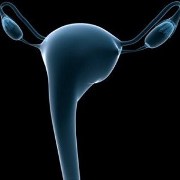 Photo: Getty Images
Photo: Getty Images
RESOLVE: The National Infertility Association has said that infertility is often diagnosed after a couple has had one year of unprotected, well-timed intercourse, or if the woman has suffered multiple miscarriages and the woman is under 35 years of age. If the woman is over 35, it’s diagnosed after six months of unprotected, well-timed intercourse.
About 10 percent of women in the United States ages 15-44 have difficulty getting pregnant or staying pregnant, according to the Centers for Disease Control and Prevention (CDC).
WomensHealth.gov outlined pregnancy as a process with many steps. To get pregnant, a woman must release an egg from one of her ovaries. The egg must go through a fallopian tube toward the uterus.
Sperm must fertilize the egg along the way. The fertilized egg must then attach to the inside of the uterus. Infertility can happen if there are problems with any of these steps.
The Mayo Clinic reported that ovulation disorders are a major cause of female infertility. The American Pregnancy Association said that ovulation disorders may be caused by a hormone imbalance; tumors or cysts; eating disorders such as anorexia or bulimia; alcohol or drug use; thyroid gland problems; excess weight; stress; intense exercise that causes a significant loss of body fat and extremely brief menstrual cycles.
WomensHealth.gov added that polycystic ovarian syndrome (PCOS), a hormone imbalance problem, can interfere with normal ovulation.
Other causes of female infertility include premature ovarian failure; blocked fallopian tubes due to pelvic inflammatory disease; endometriosis; scar tissue, abnormal cervical mucus; and physical problems with the uterus and fibroids.
WomensHealth.gov stressed that age increases the risk of female infertility in several ways. Ovaries become less able to release eggs; a smaller number of eggs remain; the eggs aren’t as healthy; women are more likely to have health conditions that can cause fertility problems; and are more likely to miscarry.
Planned Parenthood says other risk factors include a history of sexually transmitted disease; health problems that cause hormonal changes; being overweight or underweight; chemotherapy or radiation treatment for cancer; environmental toxins; excessive drug, alcohol or caffeine use; poor diet and smoking cigarettes.
Female infertility treatment includes medication, surgery and artificial reproductive technology (ART).
Harvard University said that infertility associated with ovulation disorders often can be treated with hormone medications called fertility drugs which encourage the ovaries to release more than one egg at a time.
The Mayo Clinic said that surgical procedures include endometrial tissue or pelvic adhesions removal, tubal reversal surgery, and tubal surgery to unblock fallopian tubes.
Artificial reproductive technology (ART) includes in vitro fertilization (IVF) which means fertilization outside of the body and intrauterine insemination (IUI) often called artificial insemination.
Sources:
Female Infertility. MayoClinic.com by Mayo Foundation for Medical Education and Research. Web 18 Jan 2012.
http://www.mayoclinic.com/health/female-infertility/DS01053
Infertility Fact Sheet. WomensHealth.gov by the Office on Women's Health in the Office of the Assistant Secretary for Health at the U.S. Department of Health and Human Services. Web 18 Jan 2012.
http://womenshealth.gov/publications/our-publications/fact-sheet/infertility.cfm
Female Infertility. Health.Havard.edu by Harvard University. Web 18 Jan 2012.
http://www.health.harvard.edu/newsletters/Harvard_Mental_Health_Letter/2009/May/Female-Infertility
Female Infertility. AmericanPregnancy.org by the American Pregnancy Association. Web 18 Jan 2012.
http://www.americanpregnancy.org/infertility/femaleinfertility.html
Female Infertility. PlannedParenthood.org by Planned Parenthood Federation of America Inc. Web 18 Jan 2012.
http://www.plannedparenthood.org/health-topics/womens-health/female-infertility-22753.htm
Frequently Asked Questions about Infertility. Resolve.org by the National Infertility Association. Web 18 Jan 2012.
http://www.resolve.org/infertility-overview/what-is-infertility/frequently-asked-questions-about-infertility.html
What is infertility? CDC.gov by the Centers for Disease Control and Prevention. Web 18 Jan 2012.
http://www.cdc.gov/reproductivehealth/infertility
Reviewed January 20, 2012
by Michele Blacksberg RN
Edited by Jody Smith





Add a Comment1 Comments
The root cause of infertility can be easily established or diagnosed after the couples have had unprotected intercourse for over a period of six months or one year.
July 24, 2012 - 4:18amThis Comment